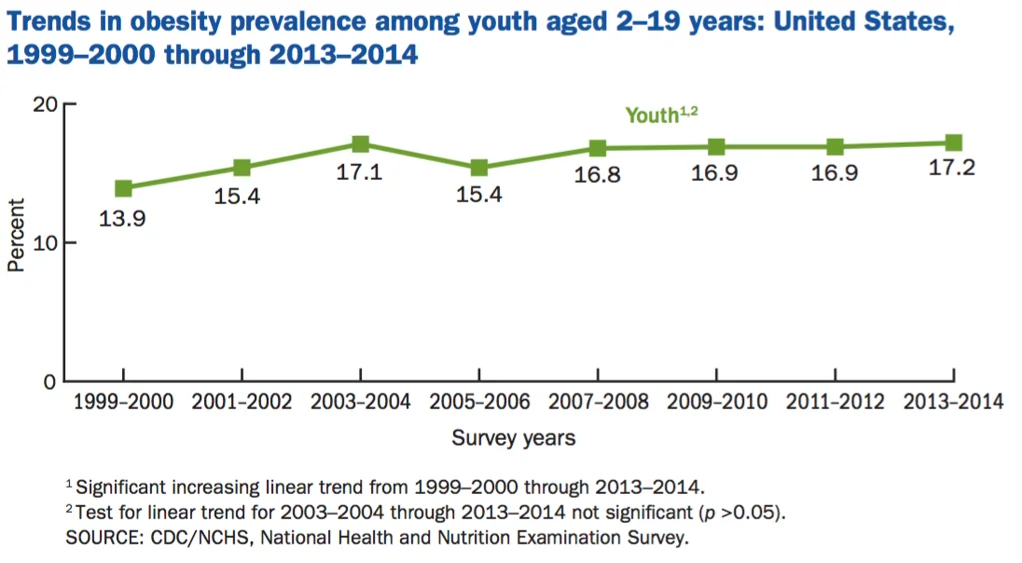Why We Are Needed
Poor cardiometabolic health is not a chronic problem. It is a true epidemic in U.S. youth.
Children now have diseases that were formerly only found in adults:
Type 2 diabetes
Atherosclerotic heart disease
Fatty liver disease
Cognitive dysfunction and mental health diseases

Rates of pediatric obesity have more than doubled in children, and quadrupled in adolescents, over the last 30 years — and it only continues to rise.
Poor dietary habits and a sedentary lifestyle in children leads to:
Insulin resistance and increased cardiometabolic risk… which can result in
Cognitive dysfunction
Poor student academic performance, test scores, and attendance
Psychiatric and psychological disorders, including
Psychiatric and psychological disorders, including
- Depression
- ADHD
- Bullying
- Learning disabilities
- Poor stress regulation
The disease of obesity discriminates.
Minority and low-income children continue to bear the greatest burden of risk.



This was true 20 years ago and it’s true now.
After COVID, this disparity has only risen.
The people we traditionally look to solve the problem can’t do it by themselves.
We typically think that taking care of child health is a pediatrician’s job
BUT peditricians have about 15-30 minutes ANNUALLY to discuss growth, development, anticipatory guidance, immunizations, and additional concerns… and to address all of the physical, social, psychologic, AND economic factors that play a role in cardiometabolic health
Pediatricians can’t control the built environment of a child and have a limited ability to change it
Medical students have limited exposure to lifestyle counseling in medical school and residency

Factors that Affect Cardiometabolic Health
Healthy food availability
Cost of healthy food
Availability of safe places to play and supervision
Genetics
Metabolic rate
The list goes on!
We need to think BIG and think DIFFERENTLY!
Children spend approximately 943 hours per year in school.
Schools control a significant portion of a built environment for youth and present a big opportunity for change.
